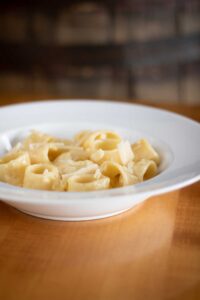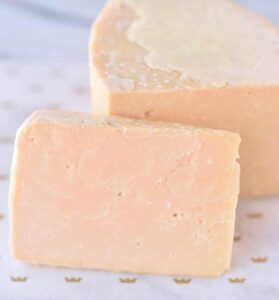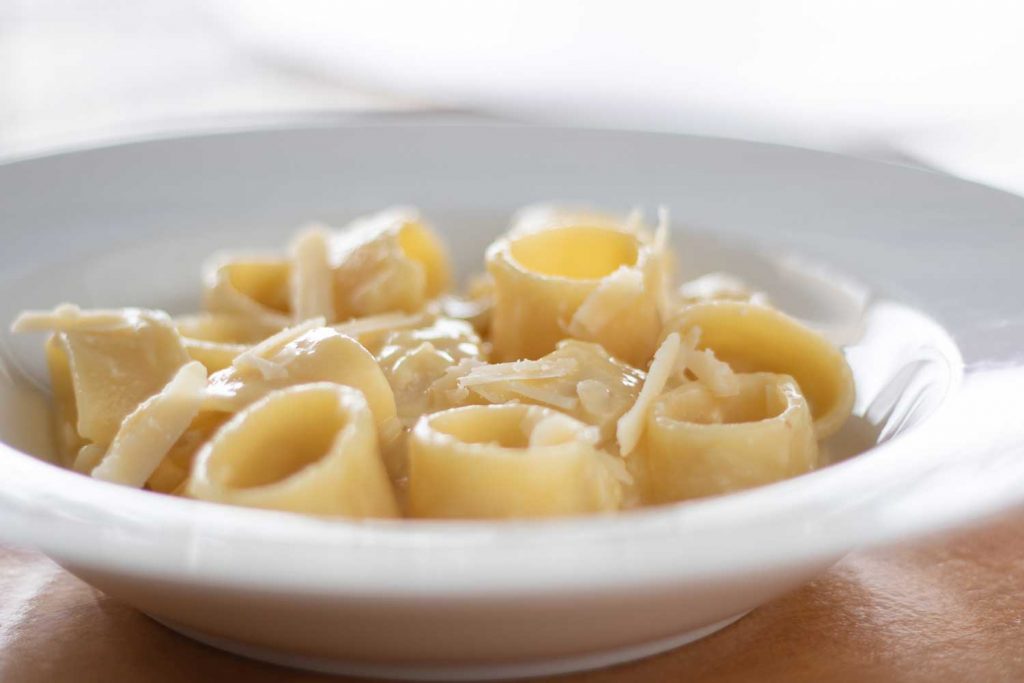 I have a cold. Or a sinus infection. Or maybe it’s allergies. I have symptoms pointing to all three possibilities and I’m bamboozled by my body’s ability to feel so ambiguously yucky. The weather is warming up, the skies are mostly clear, and I’m in bed with a box of tissues and a queue or Real Housewives reruns.
I have a cold. Or a sinus infection. Or maybe it’s allergies. I have symptoms pointing to all three possibilities and I’m bamboozled by my body’s ability to feel so ambiguously yucky. The weather is warming up, the skies are mostly clear, and I’m in bed with a box of tissues and a queue or Real Housewives reruns.
While the weather works out its springtime kinks, I’ll be working out the kinks in my sinuses. After all the vitamins, supplements, tea, and vegetables, I find myself aching for something more comforting and warm (read: pasta). On this eve of our upcoming Cheese Caves Week, a bowl of hot pasta sounds like the perfect thing to soothe my soul while I spend hours on WedMD self diagnosing.
 This sick gal wants carbonara but is missing ingredients and has no energy to get to a grocery store. Said sick gal has loads of cheese in the fridge (after all, who do you think I am?) and a head full of either stubborn American ingenuity or enough muck to cloud my classic culinary judgments. A lovely chunk of Grotte Tartufo sat atop my pile of cheeses, begging to be grated atop my ‘kinda sorta’ carbonara. Grotte Tartufo doesn’t melt the way alpine style cheeses do and will rather wilt atop hot pasta rather than coat it. I began imagining a pure white iteration of carbonara and didn’t look back from there. This is how Grotte Tartufo met a partial Pasta Carbonara and how the working title was born. Friends, meet Tartufonara. Partially carbonara, but mostly carbonara technique applied to loads of cheese and pasta.
This sick gal wants carbonara but is missing ingredients and has no energy to get to a grocery store. Said sick gal has loads of cheese in the fridge (after all, who do you think I am?) and a head full of either stubborn American ingenuity or enough muck to cloud my classic culinary judgments. A lovely chunk of Grotte Tartufo sat atop my pile of cheeses, begging to be grated atop my ‘kinda sorta’ carbonara. Grotte Tartufo doesn’t melt the way alpine style cheeses do and will rather wilt atop hot pasta rather than coat it. I began imagining a pure white iteration of carbonara and didn’t look back from there. This is how Grotte Tartufo met a partial Pasta Carbonara and how the working title was born. Friends, meet Tartufonara. Partially carbonara, but mostly carbonara technique applied to loads of cheese and pasta.
Use this recipe as a blank canvas and add other cheeses, spring vegetables, or not much else for your own (insert ingredient here)-onara. I felt better after a bowl of this, and I hope you do too.
Pasta Tartufonara
Serves 6-8
- kosher salt
- 1 lb bronze dye cut pasta (This isn’t a classic recipe, so there are no rules! We loved it on calamarata, but a long noodle like spaghetti would make this feel more traditional)
- 4 eggs
- 1 cup Parmigiano Reggiano, finely grated
- 3 ounces Grotte Tartufo, roughly grated or chopped.
Bring a large part of water to a rolling boil and season with kosher salt. Add pasta and cook just past al dente. (The pasta will finish cooking as you toss with the sauce, but since this won’t happen over heat, we want the pasta to be just moments from being finished rather than minutes)
While pasta cooks, whisk eggs and Parmigiano in a large bowl until a pale yellow paste forms. When pasta in nearly ready to be pulled from the water, take a cup of pasta water from the pot and, while whisking the egg and Parm paste, slowly drizzle the pasta water into the paste. This will temper the egg so as not to become curds and help create a silky sauce. Remove pasta directly to the bowl with egg and cheese and toss to coat and finish cooking, adding more pasta water as needed. Just before serving, toss in Grotte Tartufo and any other ingredients you’d like to include (think blanched peas, chopped greens, or crispy prosciutto). Serve immediately.

